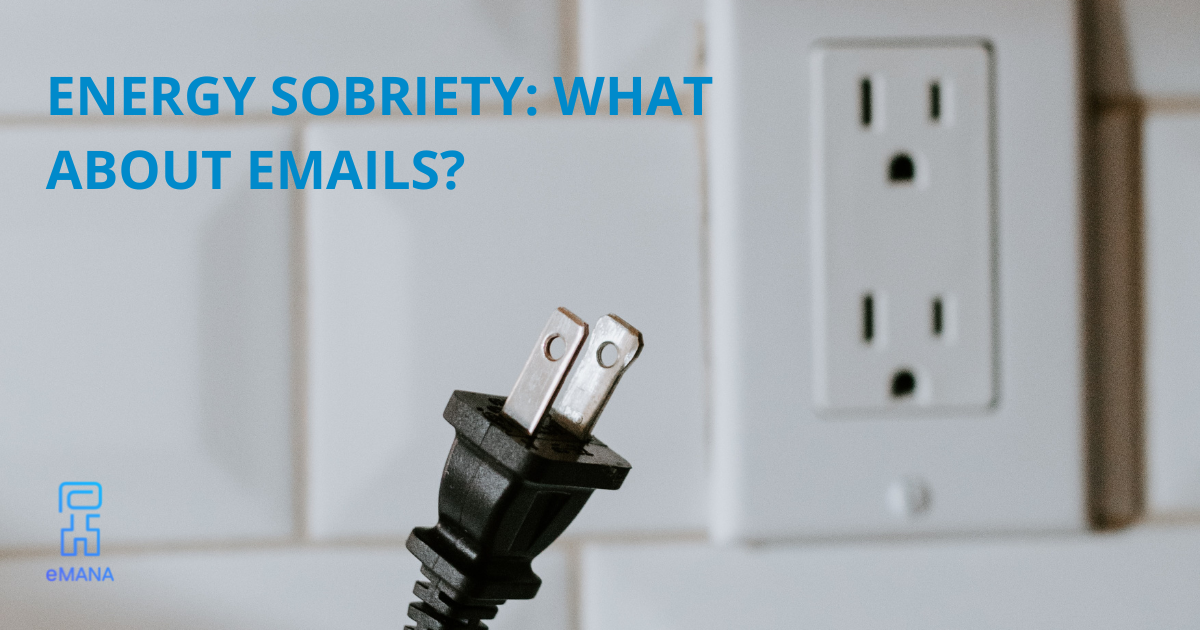Environmental footprint
In the current context, all aspects of our consumption are scrutinized to measure their impact on overall energy expenditure. The use of our electrical appliances, household appliances, heating or wifi is measured, ADEME (French Agency in charge of Energy Management) has even conducted a study on the impact of streaming versus CDs and e-readers versus paper books.
But what about emails? We send them every day, in our personal life and even more in our professional life. But we are not being asked to cut back on our habits. The pollution generated, however, is perfectly known and quantified: an email with a 1 Mo attachment has an energy impact of 25 W/h, i.e. the equivalent of two hours of use of a low-consumption light bulb*.
Beyond the solutions that exist to reduce this environmental impact, it is a question of reviewing our behavior with regard to the use of emails.
Like a reflex…
With the transition to the digital age, exchanges have been greatly facilitated and multiplied. Especially in business, sending an email is as natural as saying hello every morning. Until sending useless emails, putting too many people in copy, transferring « in case the other did not have it ».
306 billion emails are sent every day worldwide and this figure is constantly rising. It is estimated at 376 billion in 2025**.
Behind the emails, there are data centers and the energy consumption necessary to operate them and support what the volume of information circulating requires. Power consumption, CO² consumption: all this increases with the number of emails sent and the size of the attachments they contain.
This is where changing everyday behavior and how we view email becomes necessary.
Is it really useful to send so many? Should we put so many people in copy? Is this the only way to deal with his to-do list?
… that should be deconstructed
Today, almost all of the company’s tools are collaborative. Except one. Emails.
Yet this is what is used by 100% of employees.
Yet it is the main way of communicating.
Yet all the business of a company goes through email.
So why does sending emails remain an individual thing? Each with their own organization, each with their own access to information, each with their own way of managing their level of sharing.
Adopting the collaborative makes sense given the growing trend of telecommuting, the presence on different sites, the new models adopted by Generation Y, etc. The collaborative brings productivity gains and saves time overall.
A study conducted by IDC InfoBrief in 2019 shows that companies will continue to drastically accelerate the adoption of collaborative solutions. This acceleration will have to take into account the couriers, which have not changed for 15 years. For obvious reasons of working method but also to take into account what they represent in terms of energy consumption.
A new paradigm
By changing the way we look at emails, mechanically, we send and receive less.
Except for emails with large mailing lists that are needed for global communications within the company, and emails between 2 single people on important topics, the entire volume of emails sent within a team can be revised downwards.
It is these emails sent within a team that are the most numerous and therefore pollute the most.
What if the emails exchanged by other team members were available to the people concerned? What if everything was classified the same way for everyone? What if, in a search, we had access to what interests us without the need to transfer emails?
A collaborative tool which, mechanically, reduces the number of emails sent and received.
This tool is eMANA. Plus even more bonus features that make life with email easier. If you want to help reduce energy consumption every day, start by trying eMANA for free!
*2014 ADEME study
**Estima study

